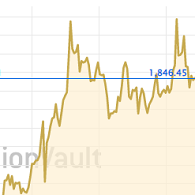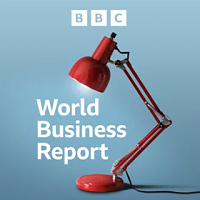When Tariffs Do Good
Today's US underinvests and overconsumes...
WITH so much attention focused on US stock markets, it seems timely to
pivot away from stocks for the
moment and consider the global perspective, writes Jim Rickards in The Daily
Reckoning.
Globalization may be dying in terms of trade and supply chains, but financial markets are
inextricably linked in ways
that relatively few understand.
The Dollar still dominates the global financial
system despite the cracks in
the foundation and the valid criticisms. If there's a Dollar problem in Eurodollar banks, it's sure to
echo from Tokyo to Shanghai and
New York. And problems in those locales affect everything else.
I continually
urge people to get away from
their desks, stop staring at screens and go out and talk to real people. There's no substitute for
walking the streets around the
world (including the poorest areas) if you really want to know what's going on.
I've just returned from
separate visits to India, Japan and Jekyll Island, Georgia. India has the largest population in the
world, has the fifth largest
economy, is a nuclear power and a key member of BRICS. Japan is the fourth largest economy in the world
and is a key geopolitical ally
of the United States in its faceoff with China. Jekyll Island is a lovely ocean resort but is best known
as the site of a secret
meeting in 1910 where the Morgan, Rockefeller and Warburg interests dreamed up the Federal Reserve
System.
While India, Japan and Jekyll Island could hardly be more diverse and geographically scattered, they
share a common thread. It's their
economic linkage through the US Dollar. The following are some impressions I gathered during these
visits that reflect the volatile
situation facing markets today.
For Trump's new tariff policies, responses
varied from retaliation tariffs
(proposed by Canada, China and the EU) to a much more reasonable approach of simply asking the White
House for a meeting to sit down
and discuss the issue amicably with a view to lowering tariffs in both directions. Japan and India fell
into this latter category and
are being rewarded by being included among the first countries that will actually have that opportunity.
(Mexico has also taken the
moderate route by engaging in discussions rather than retaliation).
There will
be some give and take. Some US
tariffs on certain items are likely to remain in place. But the optimal solution is not to cut down on
US purchases from those
countries but for them to buy more from the US.
That trims the US trade deficit
without reducing world trade
and so constitutes a win-win resolution with both India and Japan. India will likely buy more military
hardware and semiconductors
from the US Japan will likely buy more agricultural goods including soybeans and beef. The result will
be higher growth in the
US.
Bilateral deals like this have losers. Taiwan may miss out on some
semiconductor sales (although they are
investing hundreds of billions of Dollars to build semiconductors in the US). Russia may miss out on
military sales to India although
they will remain a major energy supplier. Still, the US is done being the "consumer of last resort" to
the world and wants to increase
its profile as a seller. Trump's policies move the US in that direction.
There
is little question that the
new US tariff policy will hurt some countries around the world. Not to sound harsh, but that's their
problem. Trump's job is to make
America great again. President Xi's job is to make China great again. Chancellor-in-waiting Merz's job
is to make Germany great
again.
The US cannot carry the world on its back. If other countries (rich or
poor) took Trump's
growth-oriented approach instead of free riding on America, the entire world would be better off. That's
certainly the view from the
White House and is a good guide to US policy going forward.
Defenders of China
point to the fact that Chinese
exports are not a particularly large percentage of their total GDP. (Germany is the worst offender by
that metric). The problem with
that data point does not come from the Chinese export number; I'm sure that's roughly correct. The
distortion comes from the GDP
denominator. Chinese GDP is overstated by 100% (at least) perhaps more, and China may already be in a
recession.
The reason is that China shows about 45% of its GDP as investment, mostly in the form of
government backed construction.
I've been to the ghost cities in China and seen more on the horizon. I got mud on my boots on the
construction sites (except I was
wearing Italian loafers). There is real steel, glass and copper in the buildings and it takes real labor
to build them. That all
counts as GDP.
But they're all empty. If you used GAAP or international
accounting principles, you would
write that investment down to zero immediately. You can't put a ghost city into inventory. Buildings age
rapidly and take enormous
amounts to maintain. I saw this in the Congo in the early 1980s. They had a commodity boom in the 1970s
and wasted much of the money
on skyscrapers and other showcase projects.
By the time I arrived there, the
windows were falling out and
rust stains ran down the sides of their showcases. The same thing will happen in China. Once you make
that accounting adjustment for
wasted investment, GDP shrinks, and the Chinese export/GDP ratio goes up exponentially. China is much
more dependent on exports for
any real growth than most analysts realize. Trump and Scott Bessent have this right.
Tariffs are not
automatically good or bad for an economy. Their impact depends on initial conditions when the tariffs
are imposed. Tariffs are a tool
that should be applied judiciously. A country that overinvests and under consumes will be hurt by
tariffs. The tariffs will increase
investment and restrain consumption, making the imbalance worse. That's what happened to the US under
the Smoot-Hawley Tariffs in 1930
and later.
A country that over consumes and underinvests will benefit from
tariffs. That's the situation in
the US today. The tariffs will increase investment as foreign and domestic investors build new plants
behind tariff walls. Tariffs
will channel consumer Dollars from consumption into savings, which is also desirable. In the end,
consumption will expand not because
of cheap imports but because of high-paying US jobs.
China is in the category
that overinvests (much of it
wasted) and under consumes. China's best strategy would be to lower its own tariffs and allow its people
to spend their savings on
imported goods from the US and EU along with their own production. That would reduce China's trade
surplus with the US, increase
China's GDP and improve the well-being of its own people. It would also make an excellent opening move
in any effort to get the US to
reduce its tariffs on China.
The US is making good use of tariffs. China is
doing the opposite. China may be
fighting to a draw in the rhetorical war, but it will definitely lose the trade war. Japan, India and
Mexico are models of how to make
progress. China is the poster child for how to fail.
Global supply chains will
no doubt be disrupted by the
tariff and trade wars now erupting. Reconfiguring supply chains will be a one-to-two-year transition.
But once it's done, the new
supply chains will prove durable. Volkswagen blundered badly by putting its new Audi Q5 plant in Mexico.
Their US sales are booming
right now (beat the tariffs!) but will fall off a cliff once dealer inventories are drained and tariffs
apply. Still, that's a
management blunder not a global disruption. Supply chains are adaptable with a lag. US soybeans will
soon be on their way to Japan if
China doesn't want them.
As an aside, Elon Musk's shelf life in the White House
pantry will soon expire. Musk
sparked a pointless feud with White House trade and manufacturing czar Peter Navarro. I know Peter
fairly well (a conversation with
him is like a graduate level oral exam but that's another matter). When Elon attacked Navarro, he messed
with the wrong guy. Navarro
took a bullet for Trump by serving four months in a federal penitentiary rather than answer a subpoena
that sought to pierce the veil
of executive privilege between the two. That's the kind of loyalty Trump respects. Navarro also happens
to be right about tariffs
despite Musk's whining.
With regard to the Federal Reserve System that emerged
from the swamps around Jekyll
Island, the Fed has fallen into complete irrelevance. They have modest impact on the short-end of the
yield curve (Treasury bills) but
have no material impact on the intermediate- and long-end of the yield curve (Treasury notes and
bonds).
US
national debt and spending will never be brought under control. But sustainable growth can be stimulated
by sound fiscal policies, if
not by the Fed. As long as nominal growth is greater than nominal debt increases, then the US
debt-to-GDP ratio will shrink. That's
the simple formula behind Scott Bessent's Three Arrows plan and it can feed on itself in a virtuous
circle.
What the Fed and the Treasury have done (mostly under Biden) is to create a global Dollar shortage,
which is now morphing into a
global liquidity crisis. China is not dumping Treasuries because they're distancing themselves from the
Dollar. Quite the opposite.
China is selling Treasuries because they're desperate for Dollars and can't get them from Japanese banks
who have their own problems
with carry trade unwinds.
The liquidity crisis then goes back to European banks
who can't fund in EuroDollars
and US hedge funds who can't find collateral to support their derivatives basis trades. India is not
immune.
The best description of a financial crisis I've ever heard is that "Everybody wants his money back."
We're dangerously close to that
situation right now. If it gets worse, trade, tariffs and stock markets will be a sideshow. Watch
Treasury yields and foreign exchange
markets if you really want to know what's going on.












 Email
us
Email
us
